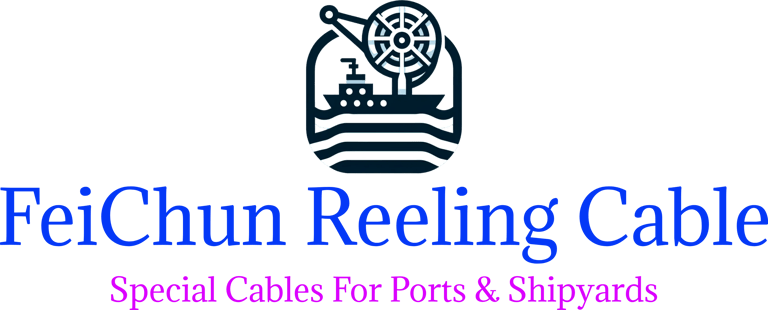Type 2TC-RB Reeling Rubber Cable: The Unsung Hero of Industrial Power
Discover the robust and flexible Type 2TC-RB Reeling Rubber Cable, engineered for dynamic industrial applications. Learn about its construction, compliance with JIS C 3327, and best practices for installation and maintenance to ensure optimal performance.
Type 2TC-RB Reeling Rubber Cable: The Unsung Hero of Industrial Power
In the intricate world of industrial machinery, where robustness meets precision, one component silently powers it all—the Type 2TC-RB Reeling Rubber Cable. This remarkable 600V cable might not capture headlines, but it certainly captures the attention of engineers who understand that reliable power transmission can make or break an industrial operation.
The Dynamic Powerhouse Behind Moving Machinery
Imagine a mining excavator swinging its massive arm, a theater curtain gracefully rising, or an automated warehouse system precisely delivering goods. Behind each of these movements is a cable that must flex thousands of times without failing. The Type 2TC-RB isn't just any cable—it's specifically engineered for environments where constant motion is the norm, not the exception.
"Most people never think about cables until they fail," says many an experienced plant manager. Indeed, in dynamic industrial settings, the difference between standard fixed cables and specialized reeling cables can mean the difference between continuous operation and costly downtime.
What Makes a 2TC-RB Cable Special?
At its core (quite literally), the Type 2TC-RB features tin-coated annealed copper strand wire conductors. This might sound like a mouthful, but each element serves a crucial purpose. The tin coating prevents corrosion, while the annealed copper provides excellent conductivity. Most importantly, the stranded construction offers the flexibility needed for constant movement—something solid conductors simply cannot provide.
Surrounding these conductors is a layer of ethylene propylene rubber (EP rubber) insulation. Unlike PVC insulation found in standard cables, EP rubber maintains its electrical properties and flexibility across a much wider temperature range. It doesn't harden in cold environments or become too soft in hot ones, making it ideal for demanding industrial settings where temperatures fluctuate.
The outer sheath, made from polychloroprene rubber (better known as neoprene), offers remarkable protection against:
Oil and grease splatters
Chemical exposure
UV radiation
Moisture and weather conditions
Physical abrasion
Between these main components lie several unsung heroes: separators that maintain uniform insulation thickness, colored tapes for easy core identification, fillers that maintain the cable's round shape, and binder tapes that hold everything together before the final sheath is applied.
The JIS C 3327 Standard: A Seal of Quality
The 2TC-RB cable isn't just well-designed—it's built to meet exacting standards. The Japanese Industrial Standard JIS C 3327 specifies requirements for 600V rubber-insulated flexible cables, ensuring consistent quality and performance. Compliance with this standard means the cable has undergone rigorous testing for electrical properties, mechanical strength, flame resistance, and durability.
This isn't merely bureaucratic paperwork—it's your assurance that the cable will perform as expected in critical applications where failure simply isn't an option.
Color Coding: The Language of Cables
Ever wonder how electricians know which wire connects where? The 2TC-RB follows a precise color-coding system that prevents costly mistakes during installation and maintenance:
2 Core cables: Black, White
3 Core cables: Black, White, Red
4 Core cables: Black, White, Red, Green
5+ Core cables: Uses a tracer method with repeated colors
This simple visual system saves countless hours during installation and troubleshooting, allowing technicians to quickly identify each conductor without needing specialized equipment.
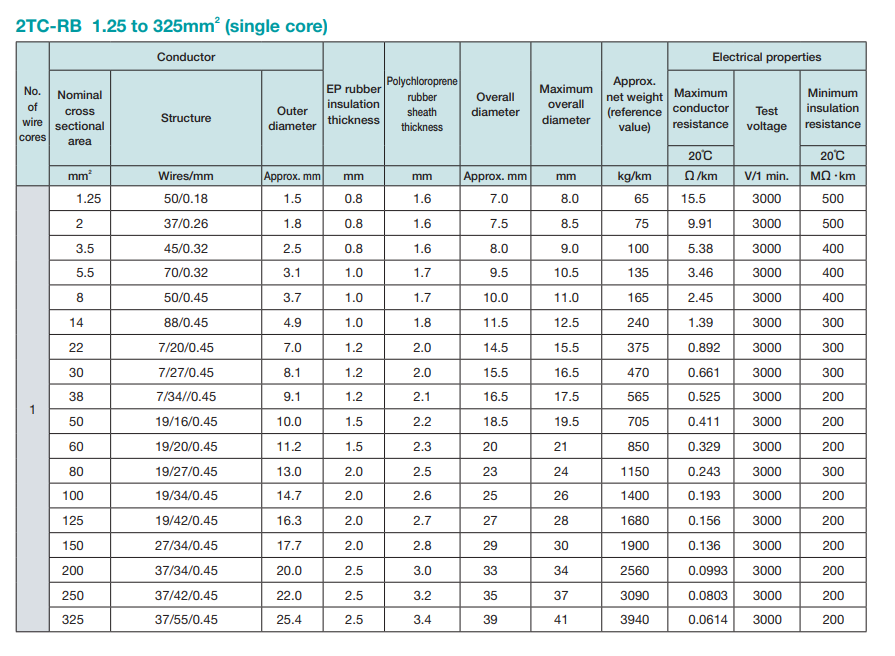

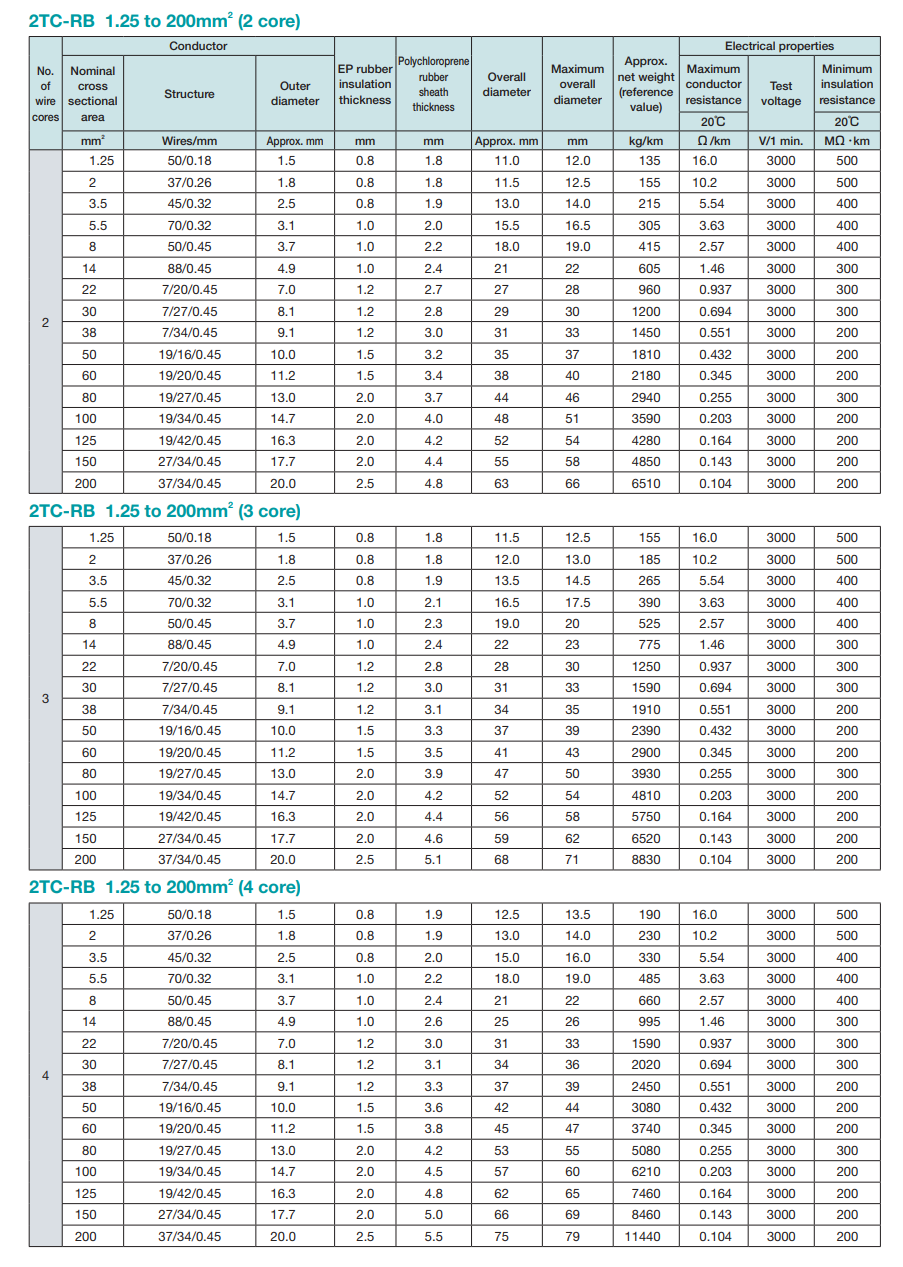

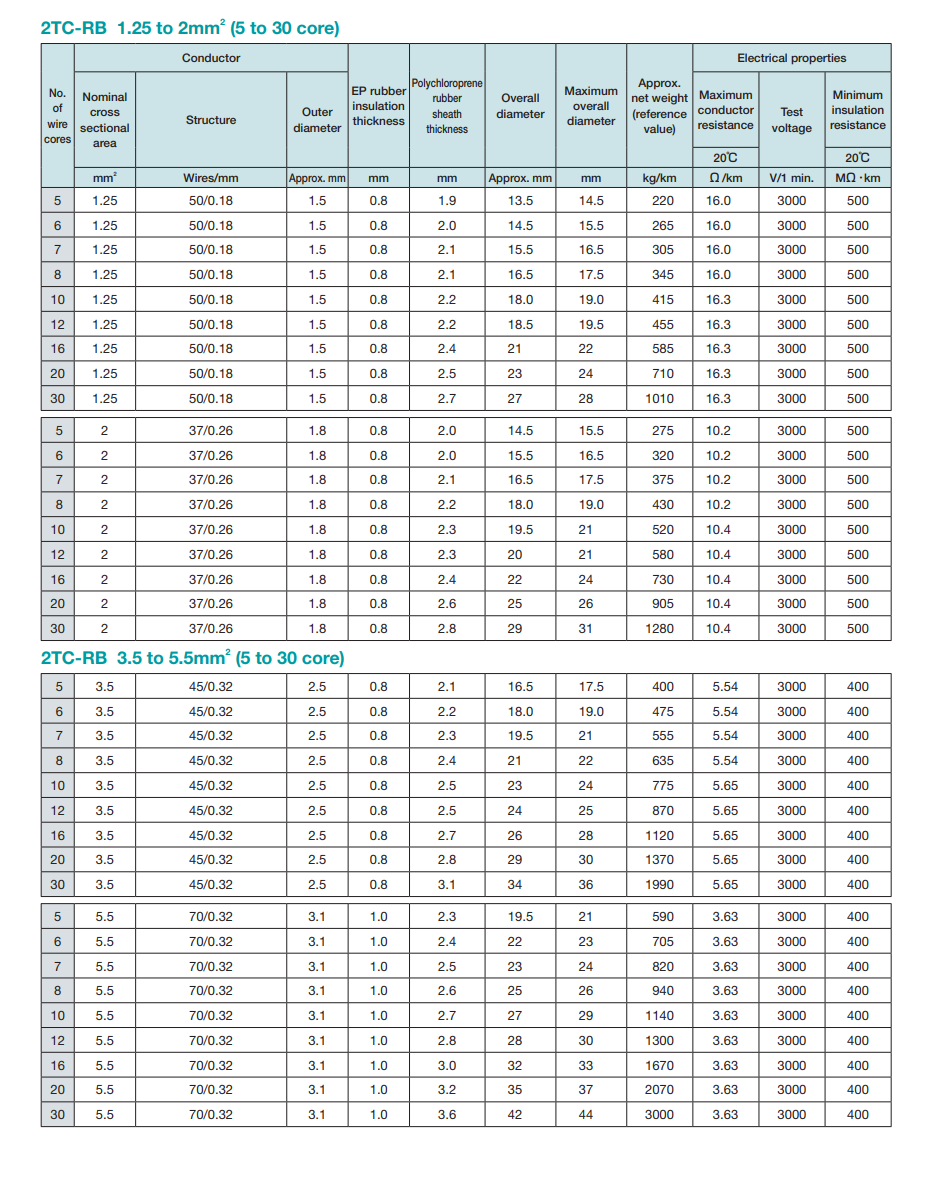

Beyond the Basics: Where 2TC-RB Cables Excel
What truly sets the 2TC-RB apart is its performance in demanding applications. Standard cables might work fine in static installations, but dynamic environments require specialized solutions:
Curtain Systems: Theater stages, industrial dividers, and specialized manufacturing facilities use motorized curtains that require reliable power delivery during thousands of open-close cycles.
Carrier Drum Systems: In applications where cables must be regularly wound and unwound—such as in mobile equipment, cranes, and lifts—the 2TC-RB's flexibility prevents the fatigue cracking that would quickly disable standard cables.
Cableveyor Systems: These snake-like cable management systems guide cables through complex movements in automated machinery. Here, the cable's flexibility and durability are pushed to their limits, and the 2TC-RB delivers where lesser cables would fail.
Mining and Construction: Few environments are as harsh as mining operations and construction sites, where dust, moisture, vibration, and physical impact are constant threats. The 2TC-RB's robust construction withstands these challenges while maintaining reliable power transmission.
Installation Best Practices: Extending Cable Life
Even the best-designed cable can fail prematurely if improperly installed. Following these guidelines ensures optimal performance and longevity:
Before installation, carefully inspect the cable for any shipping damage. Even minor cuts in the outer sheath can lead to moisture ingress and eventual failure.
Mind the bend. The 2TC-RB has a specified minimum bending radius—typically about 8 times the cable diameter for dynamic applications. Exceeding this limit can damage the internal structure and lead to premature failure.
Support matters. Use appropriate cable management systems that properly support the cable's weight and guide its movement. Unsupported sections can create stress points that eventually fail.
Termination techniques make a difference. Proper cable termination maintains electrical integrity and prevents moisture from wicking into the cable. Use compression glands appropriate for flexible cables rather than those designed for fixed installations.
The Environmental Edge
In today's environmentally conscious industrial landscape, the 2TC-RB offers advantages beyond its technical specifications. Its durability means fewer replacements and less waste. The rubber components, while not easily recyclable, have an exceptionally long service life when properly maintained—often outlasting the machinery they power.
Moreover, reliable power transmission means more efficient operation and less energy waste, contributing to the overall sustainability of industrial operations.
When to Choose 2TC-RB Over Alternatives
The 2TC-RB isn't the right choice for every application. Fixed installations with no movement requirements might be better served by less expensive alternatives. However, when your application involves:
Regular flexing or movement
Exposure to oils, chemicals, or weather
Temperature extremes
Requirements for long-term reliability
Critical operations where failure isn't acceptable
...then the Type 2TC-RB Reeling Rubber Cable deserves serious consideration. Its higher initial cost is quickly offset by reduced maintenance, fewer replacements, and—most importantly—prevention of costly downtime.
Maintenance: Keeping the Power Flowing
Even the most robust cable benefits from proper maintenance. Regular visual inspections can catch potential issues before they become failures. Look for:
Cuts, abrasions, or damage to the outer sheath
Flattening of the cable in high-stress areas
Discoloration that might indicate overheating
Unusual stiffness or brittleness
Signs of chemical damage
When not in use, store cables properly—coiled at an appropriate diameter, protected from extreme temperatures, and shielded from direct sunlight and chemical exposure.
Conclusion: The Foundation of Industrial Reliability
The Type 2TC-RB Reeling Rubber Cable might not be the most exciting component in an industrial setting, but it's undeniably one of the most important. Its specialized construction meets the challenging demands of dynamic industrial environments, providing reliable power transmission where standard cables would quickly fail.
By understanding the unique properties and proper application of the 2TC-RB cable, engineers and maintenance professionals can ensure the continuous operation of critical industrial systems. In the world of moving machinery, this unassuming component truly is the flexible backbone of industrial power.
Whether you're designing a new system or upgrading an existing one, considering the Type 2TC-RB for your dynamic power transmission needs might be one of the most important decisions you make for long-term operational reliability.


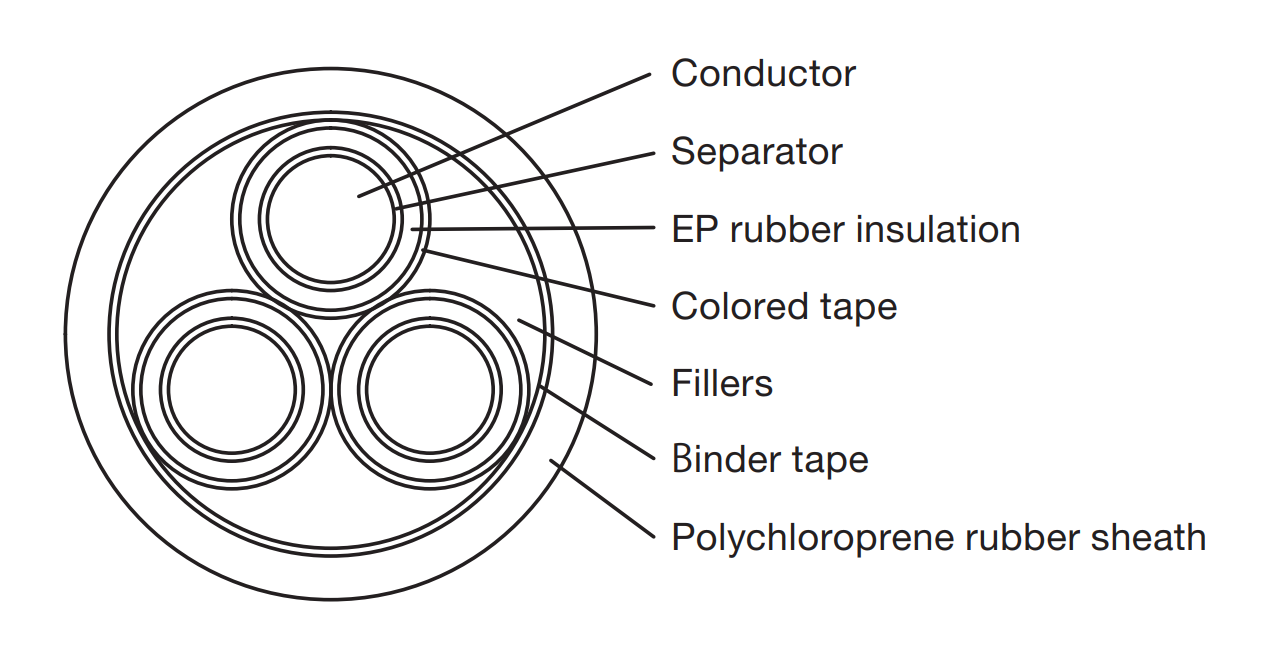

Frequently Asked Questions (FAQ)
1. What is the Type 2TC-RB Reeling Rubber Cable?
The Type 2TC-RB is a 600V class reeling rubber cable designed for dynamic applications requiring high flexibility and durability, such as in curtain systems, carrier drums, and cableveyor systems.
2. What does "2TC-RB" stand for?
"2TC-RB" denotes a specific cable type characterized by tin-coated annealed copper conductors (2TC) and a rubber-based insulation and sheath (RB), suitable for reeling applications.
3. What are the typical applications of this cable?
It's commonly used in industrial settings involving constant motion, including mining equipment, automated warehouse systems, and stage machinery.
4. Why choose a reeling rubber cable over standard cables?
Reeling rubber cables like the 2TC-RB are specifically engineered to withstand continuous flexing, mechanical stress, and harsh environmental conditions, ensuring longevity and reliability where standard cables may fail.
5. Who manufactures the Type 2TC-RB cable?
Manufacturers like Feichun Cable produce the Type 2TC-RB, adhering to international standards to ensure quality and performance.
Technical Specifications
6. What is the voltage rating of the Type 2TC-RB cable?
It has a voltage rating of 600V, suitable for various low-voltage industrial applications.
7. What materials are used in its construction?
The cable comprises tin-coated annealed copper strand conductors, ethylene propylene rubber (EP rubber) insulation, and a polychloroprene rubber sheath.
8. What are the benefits of tin-coated copper conductors?
Tin coating enhances corrosion resistance, while the annealed copper provides excellent conductivity and flexibility, essential for dynamic applications.
9. How does EP rubber insulation perform?
EP rubber offers superior thermal stability, electrical insulation, and flexibility across a wide temperature range, making it ideal for demanding environments.
10. What advantages does the polychloroprene sheath provide?
Polychloroprene rubber, commonly known as neoprene, offers excellent resistance to oils, chemicals, UV radiation, moisture, and physical abrasion.
Compliance and Standards
11. Does the Type 2TC-RB comply with any standards?
Yes, it complies with the Japanese Industrial Standard JIS C 3327, which specifies requirements for 600V rubber-insulated flexible cables.
12. Why is compliance with JIS C 3327 important?
Compliance ensures the cable meets rigorous safety, performance, and quality benchmarks, providing assurance of its suitability for industrial applications.
13. Are there other international standards applicable to this cable?
While JIS C 3327 is the primary standard, the cable may also meet other international standards depending on the manufacturer's certifications.
14. How can I verify a cable's compliance with JIS C 3327?
Check the manufacturer's documentation and product labeling for compliance statements and certification marks.
15. What tests are conducted to ensure compliance?
Tests include evaluations of electrical properties, mechanical strength, flame resistance, and durability under specified conditions.
Installation and Handling
16. What is the recommended minimum bending radius?
Typically, the minimum bending radius is about 8 times the cable's outer diameter for dynamic applications.
17. Can the cable be used in both indoor and outdoor environments?
Yes, its robust construction allows for use in various environments, but always consult the manufacturer's guidelines for specific conditions.
18. How should the cable be stored when not in use?
Store in a cool, dry place, coiled properly without sharp bends, and protected from direct sunlight and chemicals.
19. Are there specific installation guidelines to follow?
Yes, ensure proper support, avoid exceeding bending radius limits, and use appropriate termination methods to maintain integrity.
20. What precautions should be taken during installation?
Inspect for damage before installation, avoid twisting or kinking, and ensure compatibility with connectors and equipment.
Maintenance and Troubleshooting
21. How often should the cable be inspected?
Regular inspections are recommended, with frequency depending on usage intensity and environmental conditions.
22. What signs indicate potential cable failure?
Look for cuts, abrasions, discoloration, stiffness, or any visible damage to the sheath or insulation.
23. Can damaged cables be repaired?
Minor damages may be repairable using appropriate methods, but significant damage often necessitates cable replacement.
24. How can I extend the cable's service life?
Proper installation, regular maintenance, and adherence to operational guidelines help maximize longevity.
25. What environmental factors can affect cable performance?
Extreme temperatures, exposure to chemicals, UV radiation, and mechanical stress can impact performance if not properly managed.
Performance and Durability
26. How does the cable perform under continuous flexing?
It's designed to withstand frequent bending and movement, maintaining performance over extended periods.
27. Is the cable resistant to oil and chemical exposure?
Yes, the polychloroprene sheath provides excellent resistance to oils and many chemicals commonly found in industrial settings.
28. Can the cable operate in extreme temperatures?
EP rubber insulation allows for operation across a wide temperature range, but always refer to the manufacturer's specifications.
29. What is the expected service life of the cable?
Service life varies based on usage and environmental conditions, but with proper care, it offers a long operational lifespan.
30. Does the cable have flame-retardant properties?
Yes, it meets flame resistance requirements as specified in JIS C 3327, enhancing safety in fire-prone environments.
Selection and Compatibility
31. How do I determine the appropriate cable size for my application?
Consider factors like current load, voltage, environmental conditions, and mechanical stress. Consulting with an electrical engineer or the manufacturer is advisable.
32. Is the cable compatible with standard connectors and equipment?
Generally, yes, but always verify compatibility with specific equipment and connectors to ensure proper fit and function.
33. Can the cable be customized for specific applications?
Manufacturers may offer customization options, such as different core counts or sheath colors, to meet specific requirements.
34. Are there alternatives to the Type 2TC-RB cable?
Alternatives exist, but the Type 2TC-RB is specifically designed for dynamic applications requiring high flexibility and durability.
35. Where can I purchase the Type 2TC-RB Reeling Rubber Cable?
Authorized distributors and manufacturers like Feichun Cable supply this cable. Contact them directly or visit their websites for purchasing information.
Type 2TC-RB Reeling Rubber Cable: The Unsung Hero of Industrial Power
Discover the robust and flexible Type 2TC-RB Reeling Rubber Cable, engineered for dynamic industrial applications. Learn about its construction, compliance with JIS C 3327, and best practices for installation and maintenance to ensure optimal performance.
5/1/20259 min read
